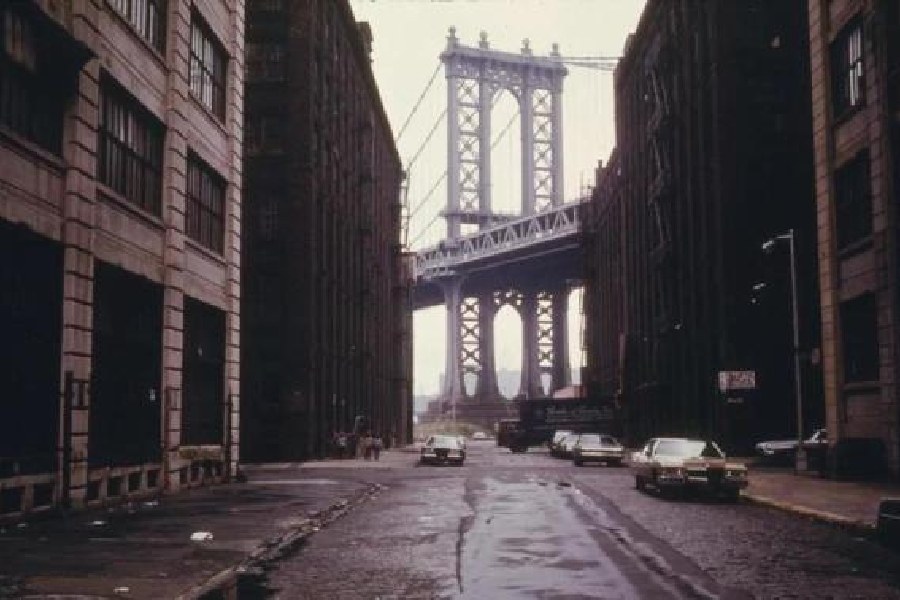Book: Crook Manifesto
Author: Colson Whitehead
Publication: Fleet
Price: Rs 799
In this work of historical fiction, Colson Whitehead dishes up his favourite flavour: the smoky tenements and narrow streets of old Manhattan in the heady days of the Seventies. Whitehead’s world is populated by a colourful mix of mob bosses, small business owners trying to keep the lights on, film stars with murky pasts, streetwise intellectuals, hobos, druggies, revolutionaries and cops, all clinging to life in a city where the rules bend in the heat of summer and snap in winter’s frosts. Each character is way more complex than this cartoonish list of occupations might suggest, and that’s what keeps you stuck to the story.
The skewer on which this rich kebab is roasted is the story of Ray Carney, furniture salesman and one-time fence, who seems unable to shake off his questionable past. But Carney isn’t exactly the protagonist, he’s just the most prominent in a host of characters whose fates are tightly woven together. Even though the narrative moves at a dizzying pace through a landscape of petty larceny, insurance fraud, loyalty, insurrection and longing, you never feel lost.
The book has a classic three-act structure, with the first act being a brilliant set piece involving a corrupt cop, a bag of jewels and the Black Liberation Army, a Black Panther spin-off that chose violence. This is where we get our first glimmering of what the ‘crook manifesto’ is because in a world where the dice are so thoroughly loaded against you, there’s not much separating crime from revolution. The second act explores Black film, and the third is about New York’s insane slum landlordism, the ripe soil that has birthed so many alligators in the sewers — they even got to run the country.
It will certainly help if you have some familiarity with New York history, as otherwise you may find yourself googling the odd name or phenomenon as you read. Or not: the book is perfectly enjoyable even if you take all of it as fiction. It has the economy of scene and dialogue that you find in great cinema, that compelling momentum of a story that is told under pressure from its own uncontainable truth.
Indians tend to think of America as a white country, but the truth is the whiteness of America is largely a construct built from many different kinds of expropriation and constantly on the offensive towards anything it perceives as the threat of truth-telling. If social opprobrium doesn’t shut down the threat, there’s always guns.
Today, as we are reeling from the news of the cop-murder of Jaahnavi Kandula, it would be salutary for us, South Asians, to pay heed to the stories of American Blacks, who’ve had to deal with White culture up close and personal for far too long. Whitehead’s world of unfair struggle, where the city constantly consumes itself in a capitalist churn of rack-renting and exploitation, shows us what it’s like to live under White rule through a thousand broad and narrow brushstrokes.
There is the man from out of town who freaks out because, as he pays his toll on the New Jersey turnpike, his hand brushes the hand of the white female tollbooth attendant which would be a lynching matter down in Alabama. There’s the restaurateur who pays a thief to steal her rival’s recipe for down-home fried chicken. There is the uptown girl who has to pretend to be ghetto to make it in Blaxploitation movies. There is the revolutionary who’s a better thief than any career crook because the movement needs money. And there is Carney in the middle, loving husband and father with a foot in both worlds, who discovers at last how deep the rot goes and has to ask himself how far he will go to put it right.
In today’s America where books are banned on the slightest of pretexts, we need more Colson Whiteheads to raise a defiant finger in the face of censorship. After all, who is a ‘crook’ and how do you exercise choice in your daily life when even controlling your own body is a crime? The use (and abuse) of bodies, mostly Black but also subaltern White, is, after all, the basis of capitalism and its parent, colonialism. Perhaps this is why the men of Whitehead’s world, poor and powerless as they are, are such peacocks with their swag.
One of the protagonists, strolling in the better part of town in 1970s New York, sees the twin towers of the World Trade Center "[l]ooming over the city like two cops" trying to decide what to do with it. Maybe that explains why ‘America’s Mayor’ has morphed into one of the most sinister men in the US. If you want a clue as to why the US is turning into the Disunited States, read this book.











